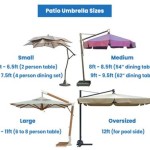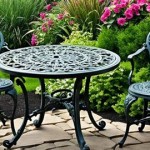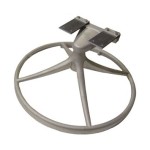Nautical Patio Furniture Cushions: A Guide to Style, Durability, and Comfort
Nautical patio furniture cushions enhance the aesthetic appeal and comfort of outdoor spaces, bringing a coastal theme to homes, restaurants, and other establishments. These cushions are specifically designed to withstand the rigors of outdoor use while maintaining a stylish and inviting appearance. Understanding the various aspects of nautical patio furniture cushions, including materials, design elements, and maintenance requirements, is crucial for selecting the right options for specific needs and preferences.
Understanding the Materials
The performance and longevity of nautical patio furniture cushions depend heavily on the materials used in their construction. Both the fabric and the filling must be carefully selected to resist moisture, fading, and wear and tear. The choice of materials influences the cushion's ability to withstand sun exposure, rain, and other environmental factors.
Outdoor fabrics are a key component of durable nautical cushions. Acrylic fabric, such as Sunbrella, is a popular choice due to its resistance to fading, staining, and mildew. Acrylic fabrics are solution-dyed, meaning the color is integrated into the fiber itself rather than applied to the surface. This process results in superior colorfastness, ensuring that the cushions retain their vibrancy even after prolonged exposure to sunlight.
Polyester fabric is another option for nautical patio furniture cushions. While not as fade-resistant as acrylic, polyester fabrics are generally more affordable and still offer good durability. Modern polyester fabrics often incorporate UV inhibitors to improve their resistance to sun damage. These fabrics are also typically water-resistant, helping to protect the cushion filling from moisture.
Vinyl-coated fabrics are also employed in some nautical cushion designs. These fabrics offer excellent water resistance and are easy to clean. Vinyl-coated fabrics are particularly suitable for high-traffic areas or environments where spills are likely. However, it is important to note that vinyl can become hot in direct sunlight, potentially affecting comfort.
The filling of nautical patio furniture cushions is equally important. Polyurethane foam is a common choice for its affordability and ability to provide cushioning. However, standard polyurethane foam can absorb moisture and degrade over time. For outdoor applications, open-cell foam or reticulated foam is preferred. These types of foam are designed to allow water to drain through, preventing mold and mildew growth.
Polyester fiberfill is another option for cushion filling. Polyester fiberfill is lightweight, quick-drying, and resistant to mildew. It provides a softer feel compared to foam, making it suitable for cushions where comfort is a primary concern. However, polyester fiberfill may compress over time, requiring occasional fluffing or replacement.
Choosing the right combination of fabric and filling is essential for creating nautical patio furniture cushions that are both comfortable and durable. Factors such as the climate, frequency of use, and desired level of maintenance should be considered when selecting materials.
Design Elements of Nautical Cushions
Beyond the materials, the design elements of nautical patio furniture cushions contribute significantly to their aesthetic appeal and functionality. Features such as stripes, patterns, and shapes all contribute to the overall nautical theme, while practical considerations like cushion thickness and attachment methods affect comfort and usability.
Stripes are a classic nautical design element. Horizontal stripes in navy blue and white are particularly evocative of maritime themes. These stripes can be incorporated into the cushion fabric itself or added as decorative piping or trim. The width and spacing of the stripes can be varied to create different visual effects, from bold and graphic patterns to subtle and understated designs.
Patterns featuring nautical motifs, such as anchors, sailboats, seashells, and compass roses, are also commonly used in nautical patio furniture cushions. These patterns can be printed or woven into the fabric, adding a decorative touch that reinforces the coastal theme. The scale and complexity of the patterns can be adjusted to suit different tastes and styles.
Color palettes play a crucial role in creating a cohesive nautical aesthetic. In addition to navy blue and white, other popular colors include shades of blue, gray, beige, and red. These colors evoke the sea, sand, and sky, creating a relaxing and inviting atmosphere. Accents of bright colors, such as yellow or turquoise, can be used to add visual interest and contrast.
The shape and size of nautical patio furniture cushions should be carefully considered to ensure a comfortable fit on the furniture. Standard cushion sizes are available for common types of patio furniture, such as chairs, sofas, and benches. Custom-sized cushions can also be made to accommodate unique furniture designs or specific preferences.
Cushion thickness is another important factor to consider. Thicker cushions provide more cushioning and support, but they can also make the furniture feel bulky. Thinner cushions may be more streamlined and modern, but they may not offer as much comfort. The ideal cushion thickness depends on the type of furniture, the intended use, and personal preferences.
Attachment methods play a key role in keeping cushions securely in place. Ties, Velcro straps, and non-slip backing are common attachment options. Ties are a classic choice that allows for easy adjustment, while Velcro straps provide a more secure hold. Non-slip backing helps to prevent cushions from sliding on smooth surfaces. The choice of attachment method depends on the type of furniture and the desired level of security.
Details such as piping, welting, and tufting can add a touch of elegance and sophistication to nautical patio furniture cushions. Piping and welting are decorative trims that outline the edges of the cushion, adding definition and visual interest. Tufting involves stitching the fabric and filling together at regular intervals, creating a textured surface and preventing the filling from shifting. These details can elevate the overall look and feel of the cushions.
Maintenance and Care
Proper maintenance and care are essential for prolonging the life of nautical patio furniture cushions and keeping them looking their best. Regular cleaning and protection from the elements can help to prevent fading, staining, and mildew growth.
Regular cleaning is crucial for removing dirt, dust, and debris from nautical patio furniture cushions. The frequency of cleaning depends on the environment and the frequency of use. In general, cushions should be cleaned at least once a month, or more often if they are exposed to heavy use or harsh conditions.
Most outdoor fabrics can be cleaned with a mild soap and water solution. A soft brush or sponge can be used to gently scrub the surface of the cushion. It is important to rinse the cushion thoroughly with clean water to remove any soap residue. Avoid using harsh chemicals or abrasive cleaners, as these can damage the fabric.
For stubborn stains, a specialized outdoor fabric cleaner may be necessary. Follow the manufacturer's instructions carefully when using these products. Spot-testing the cleaner on an inconspicuous area of the cushion is recommended to ensure that it does not cause discoloration or damage.
Allow the cushions to air dry completely after cleaning. Avoid placing them in direct sunlight, as this can cause fading. Turning the cushions over periodically will help to ensure even drying and prevent moisture from becoming trapped inside.
Protecting nautical patio furniture cushions from the elements is essential for preventing damage and extending their lifespan. When not in use, cushions should be stored in a dry, sheltered location, such as a garage, shed, or covered patio. If storage is not possible, consider using waterproof cushion covers to protect them from rain, sun, and other environmental factors.
Regularly inspecting the cushions for signs of wear and tear is also important. Check for loose seams, damaged zippers, and faded or stained areas. Promptly addressing any issues can help to prevent them from worsening and prolong the life of the cushions.
Consider using a fabric protectant spray to enhance the water resistance and stain resistance of nautical patio furniture cushions. These sprays create a barrier that helps to repel liquids and prevent stains from penetrating the fabric. Apply the protectant spray according to the manufacturer's instructions, and reapply it periodically to maintain its effectiveness.
By following these maintenance and care tips, owners can ensure that their nautical patio furniture cushions remain comfortable, stylish, and durable for years to come.

Jordan Manufacturing 38 X 21 Seac Turquoise Nautical Rectangular Outdoor Wrought Iron Chair Cushion With Ties And Hanger Loop Com

Chair Cushions Nautical

Dress Your Deck Nautical Outdoor Living Inspiration Theme Decor Furniture Sets

Jordan Manufacturing 44 X 22 Seac Turquoise Nautical Rectangular Outdoor Chair Cushion With Ties And Hanger Loop Com

Outdoor Lounge Furniture For Coastal Style Living

C Coast Nautical Adirondack Chair Cushion 49 X 20 In From Hayneedle Com Cushions

Jordan Manufacturing 38 X 21 Seac Turquoise Nautical Rectangular Outdoor Wrought Iron Chair Cushion With Ties And Hanger Loop Com

Arden Selections Oceantex 20 In X Outdoor High Back Dining Chair Cushion Nautical Red Fn02173b D9z1 The Home Depot

14 Outdoor Cushions To Spruce Up Your Garden Furniture

Outdoor Lounge Furniture For Coastal Style Living
Related Posts








